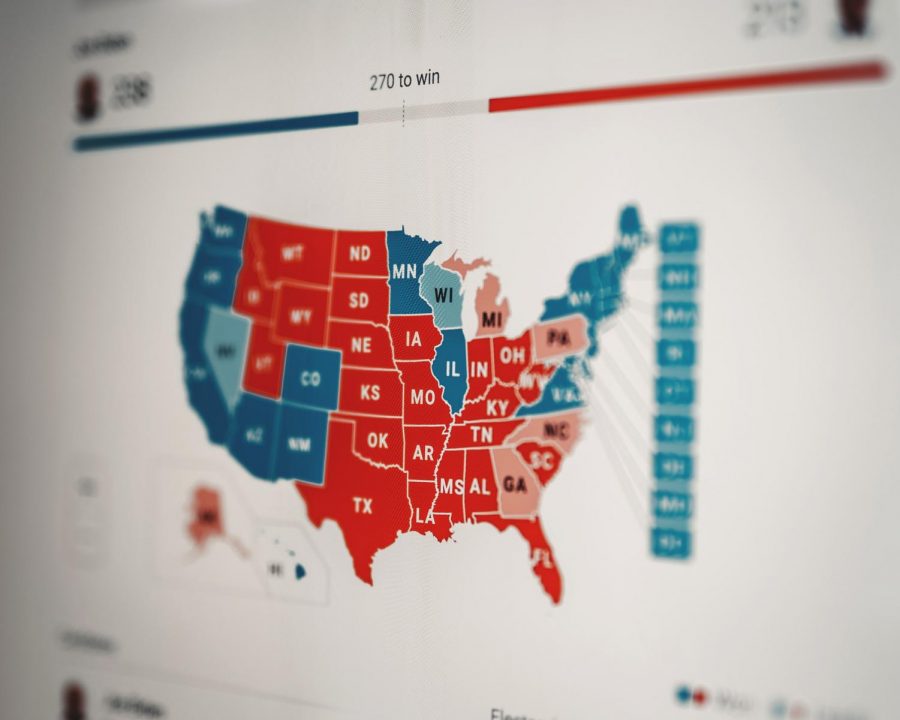The Electoral College
What is it? Should it be changed?
Far from what its name suggests, the Electoral College is not an educational institution. Rather, it is the system by which our country elects the president, standing in our country’s framework since the Constitutional Convention of 1787. Chances are that if you approached a stranger in the street and asked them to explain the system to you, they would stumble over their words. This is because—to put it bluntly—the electoral college is weird. In a quiz released by the Intercollegiate Studies Institute on the subject of American history, 43% of participants did not know what the electoral college was, with a particularly naive percentage answering that it was a system of education training those with aspiring political spirits. This begs the question— what on Earth is the electoral college?
To fully understand the electoral college, one must get to know its origins. Originally installed in 1787, this system was born at the Constitutional Convention. It was established by the Founding Fathers in Article 2, Section 1 of the document. Much like other aspects of the American framework, it has gone through limited change in the past centuries, only being slightly modified by the 12th and 23rd amendments. The system was born out of the desire to elect a president not completely based on the popular vote, and at the same time, not completely reliant on Congress. Whether or not the system is efficient is a point of contention; however, the point remains that it was largely meant as a compromise between Congress and the American masses.
Now that we have learned the origins of this system, we can begin to look into the process itself. In general terms, the process consists of selecting electors for each party, a popular vote, an elector meeting, and an electoral vote. The system consists of 528 electors, the same quantity of electors being utilized in every election since 1964. To win the election, a candidate must get a majority of 270 electoral votes. Each state has its own number of electors, equivalent to the state’s total number of senators and congressional delegates. Under the 23rd amendment, Washington D.C. was granted 3 of its own electors, functioning as a state for the benefit of the electoral process. This brings the number up to 528. However, the question remains. Who are the electors?
The word “elector” is often thrown around in discourse about the electoral process, but it is rarely explained. Prior to the election, political parties in each state nominate their electors. When you cast a vote for a president, you are not directly voting for them. Rather, you are voting for the slate of electors corresponding to that candidate’s political party. If a majority of the state votes are for the Democratic candidate, the Democratic slate of electors will be selected. These electors will then meet and cast their own votes for president. A majority of states go by an “all or nothing” policy for the selection of their electors. This means that the political party of the winner of the popular vote in a state will receive all of that state’s electors, and the loser of the popular vote in that state gets zero electors. When looking at the big map on your T.V. screen during early November, you may have noticed some snazzy stripes on Nebraska and Maine. These are not fun map decorations, although, that would be a great thing to implement in future elections (thank me later, John King.) Nebraska and Maine go by something known as the District System. Rather than using the popular state vote to determine their electors as a whole, these two states nominate individual electors based on the popular vote in each congressional district, with two of their electors being dictated by the state popular vote. So, in summation, each political party elects their electors prior to the election, the popular vote dictates the electors of which political party will be selected for each state, and once the electors are in place, they commence in the electoral vote. To reiterate, a presidential elect must receive 270 of these electoral votes to win the presidency, with each state having varying amounts. If a tie occurs, the election falls in the hands of the House of Representatives, each state voting as a unit.
Following a brief timeline of the electoral college could further explain the system. Let’s take a look at the 2020 election. In the spring and summer, each political party nominates their electors, often loyal party members to ensure they will stay faithful and vote to their party’s candidate at the time of the electoral vote. This year, November 3rd was Election Day, with President-elect Joe Biden winning 306 electoral votes, and Donald Trump getting 232. December 8th is the deadline for all electoral disputes, recounts, and hissy fits. Electors will then meet in their own states on December 14th, the party of the electors corresponding with the party of the candidate that won the state. The electors then cast their votes, with the deadline for their ballots being December 23rd. While there is no widely mandated federal law that requires electors to vote for their party, that is almost always the outcome. However, this is not to say there haven’t been instances of faithless electors in elections past. Some states penalize electors if they go against their pledged party, though many scholars disagree with this notion, stating it endangers electoral freedom. Electoral votes are counted by January 6th and Inauguration Day occurs on January 20th.
The reputation that surrounds the electoral college is one of great controversy. The system leads to the rise of many questions, like if an individual’s vote even matters, or if America is the great democracy that it makes itself out to be. One of the main issues with the system is the focus it puts on swing states, and in turn, leaving residents of safe states feeling like their vote doesn’t matter. Certain states have voted in favor of one party over the other for a majority of their history, and thus, politicians put less focus on these areas. Rather, in their race for 270, they grapple with areas that ultimately decide the outcome of the election, known as swing states. Swing states, like Ohio and Florida, do not consistently vote Republican or Democrat every election. This means a few votes from these regions could completely alter the outcome of the election, with the potential of just a few votes to completely sway the state to one party and grant them all the electors. It is for this reason that people state swing states determine the outcome of the election under an electoral system, and why people who live in red or blue dominated states often complain that their vote doesn’t matter. Their state’s popular vote is almost a definite, and due to the “all or nothing” system, if they vote for the candidate opposite the usual winner, it is a vote practically thrown into the wind. Another complaint held about the electoral college system is how it’s attempts to represent smaller states may actually overrepresent them, with each electoral ballot having more potential to sway the vote than in a densely populated state. Additionally, American citizens in territories, like the Virgin Islands or Puerto Rico, are not given any electors. The electoral college also does not always elect the candidate who got the national popular vote. This has been seen multiple times in history, like in the 2016 and 2000 presidential elections, where a candidate has received more votes than another, but did not reach 270 electoral votes. Another part of the problem is that a candidate could win an election by getting just enough electoral votes to win, but in the states they lost, they could have very few supporters. For instance, a candidate could get no votes in 39 states and still win the election if they got the electoral votes for New York, California, Texas, Florida, Pennsylvania, Illinois, Michigan, New Jersey, North Carolina, Georgia and/or Virginia. Lastly, the “all or nothing” system held by many of these states means that a state’s decision could simply come down to the matter of a few votes, and all the electors would be granted to that party, throwing away thousands of votes.
So, what does Shaker High think about the electoral college? When students were asked whether or not they believed the electoral college should be abolished, 25.7% said no, 37% said yes, and 37.3% said unsure. A majority of those who said unsure stated they have yet to become educated on the matter and, thus, do not have an opinion. Arguments for its abolishment include advocating for the popular vote or ranked choice, many calling the system outdated, unnecessarily confusing, and stating it decreases interest in voting. Some simply argued for reform, stating we should change all states to the District System. Many who are against the abolishment argue that bigger, Democratic cities should not dictate the outcome of the election for rural people, while those for it say they should, as cities are where a majority of the population live. Some argue that since it’s embedded in the constitution, it is too hard to change, or that changing it is not worth it as it would not have a drastic impact on the outcomes of future elections. Some even argue against the popular vote as a whole, saying that it can not be trusted or that politicians should decide who is in office. However, the biggest argument against its abolishment was simply that there would be nothing to replace it with.
While it can be hard to imagine America without the electoral college, many alternates for the system have been proposed in recent years. Instituting a national popular vote was suggested, where the state could bypass the electoral college with no constitutional amendment having to be made. To do so, states would promise to give all their electors to the national popular vote, not the vote in their particular state. The idea of abolishing the electoral college and replacing it with a direct popular vote has also been discussed, however far more complicated to implement. In order for this to occur, an amendment would have to be added to the Constitution, which can be done in two ways. Congress can propose an amendment by ⅔ vote of the chamber and then ratified by the legislature of ¾ states. Otherwise, the legislature of ⅔ states can petition Congress for a constitutional convention, at which any part of the constitution can be amended, followed by another ratification by ¾ states. The second of these two has never occurred. While 61% of Americans support abolishing the electoral college, it has evolved into a partisan issue. Democratic cities with densely packed populations would directly shape the results of the election if the system was abolished. Thus, some Republicans believe the electoral college is helpful to their party, as small rural states largely vote in their favor.
What are your opinions on the electoral college? Do you think it should be abolished? If so, what do you think it should be replaced with?
Rosie Elebyjian (she/her) is a current senior at Shaker High School and this is her third year with the Shaker Bison. In her free time, she is a chair...


